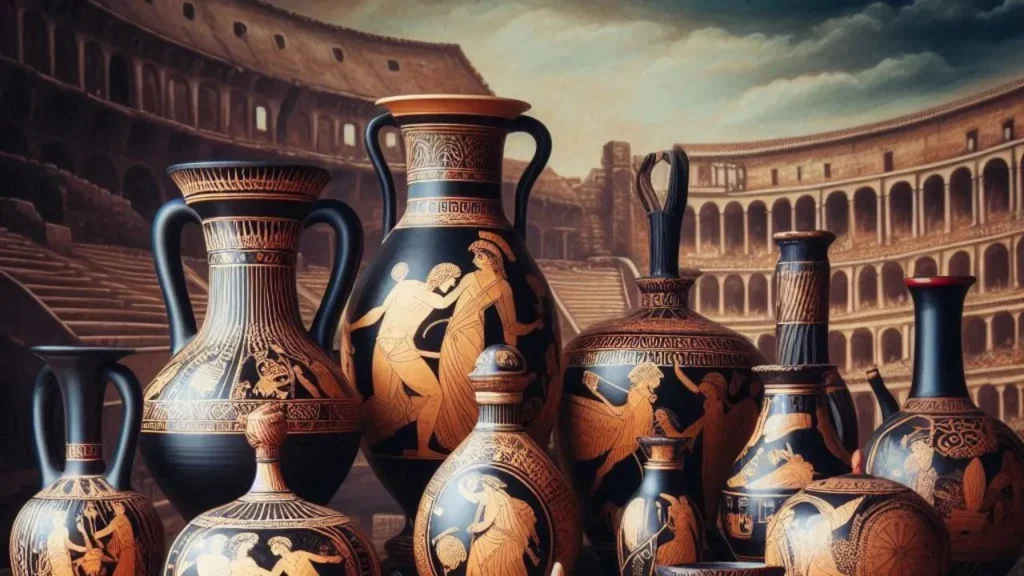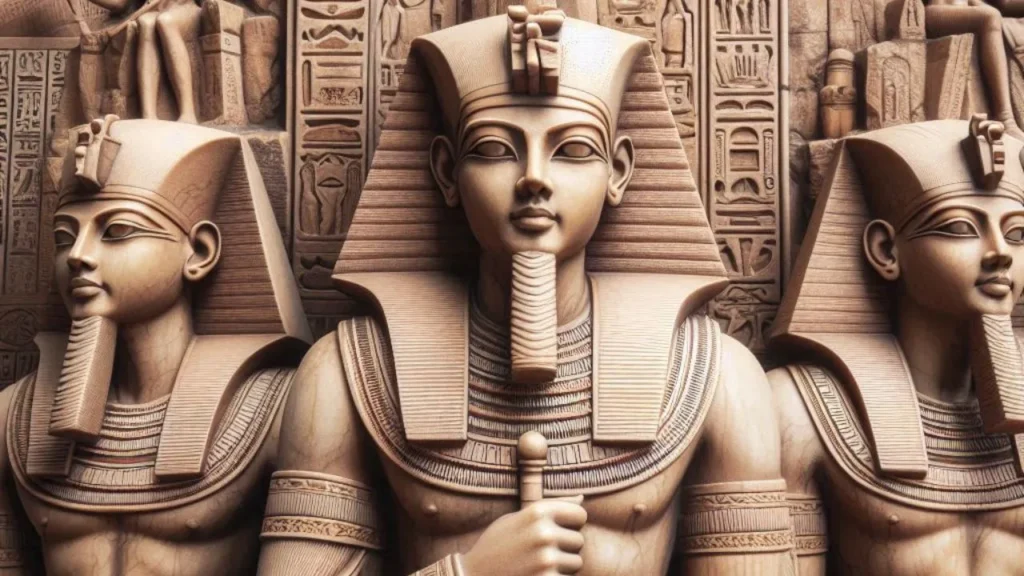Ancient artz provides a detailed look into the past, showing how humans expressed themselves, their emotions, beliefs and daily lives through creativity. Before modern technology and tools, people found ways to leave their mark, whether on cave walls or intricately carved sculptures. We’re still fascinated by these works today, appreciator the craftsmanship and wondering what the stories are.
In this blog we’ll be exploring the vast world of Ancient artz different forms, techniques and their cultural impact. From cave paintings of prehistoric times to the monumental architecture of Ancient Egypt, each piece is a snapshot of the society that made it.
What Is Ancient Art?
Ancient artz indicates the artistic practices and manifestations of early human civilizations, a journey of thousands of years. The expression “ancient artz” adds a wide scope of social works, including:
- Paintings: Made on walls, earthenware, or textures, frequently utilizing normal colors.
- Statue: Stone, wood, or metal were normal materials for sculptural art, frequently portraying divinities, creatures, or huge people.
- Architecture: From the pyramids of Egypt to the Parthenon in Greece, ancient design was practical as well as artistic.
The Job of Ancient Artists
Ancient artists were profoundly regarded in their social orders, frequently thought to be otherworldly aides or history specialists. In many societies, art wasn’t simply embellishing — it had a huge social, strict, or social reason.
Storytelling
Ancient artz frequently filled in as a type of storytelling. Where composed language hadn’t yet been completely evolved, individuals use visual pictures to pass down customs, legends, and authentic occasions. Whether through cave canvases or carvings on shelter walls, these pictures helped save social stories across the ages.
Religious Significance
Religion and other worldliness assumed a focal part in ancient social orders, and art was often used to communicate these convictions. Sculptures of divine beings and goddesses, holy images, and elaborate burial places were made to respect divinities or guide the departed to existence in the wake of death.
Cultural Reflection
Art was likewise a reflection of day to day existence. Ceramics depicting farming scenes, hunting undertakings, or get-togethers gives us a brief look into what life resembled for ancient people groups. These artworks act as verifiable reports, assisting us with grasping the qualities, practices, and ways of life of past civic institutions.
Key Types of Ancient Artz

We should investigate probably the most noticeable types of ancient arts, each mirroring the qualities and creativity of the civilizations that made them.
1. Cave Paintings: The Earliest Articulations of Art
One of the most ancient types of human expression can be found in cave artworks, which date back a huge number of years. These works of art, made with basic devices and regular colors, essentially portray creatures, hunting scenes, and impressions. Probably the most popular models include:
- Lascaux Cave (France): Found in 1940, this cavern highlights complex portrayals of ponies, buffalo, and different creatures. The lively varieties and itemized drawings feature the ability of these early artists.
- Altamira Cave (Spain): Known for its nitty-gritty bison paintings, Altamira gives understanding into how early people saw their current circumstance.
The reason behind these artworks is as yet discussed. Some accept they were use for ceremonies, while others recommend they were part of early narrating customs. One way or the other, these works of art furnish us with an immediate association with humanity the earliest artistic undertakings.
2. Sculpture: From Deities to Everyday Life
Sculpture was one more conspicuous type of ancient art. Frequently made from stone, wood, or metal, models went in size from little dolls to too many sculptures. Ancient models normally portrayed divine beings, political figures, or creatures and were in many cases set openly spaces, sanctuaries, or burial places.
- Ancient Egyptian Sculptures: The Egyptians were bosses of figure, making elaborate sculptures of their divine beings and pharaohs. The popular Sphinx and the sculptures of Ramses II are great representations of their craftsmanship.
- Greek Sculptures: The Greeks are maybe most popular for their nitty-gritty marble sculptures, which frequently portrayed human figures in deeply admired structures. The sculpture of Zeus at Olympia and the Venus de Milo are famous models.
Form assumed a basic part in strict and political life, representing power, god likeness, and the timeless idea of the spirit.
3. Pottery and Ceramics: Art Meets Utility
In ancient human advancements, stoneware wasn’t simply practical — it was additionally exceptionally beautiful. Earthenware vessels were used for stockpiling, cooking, and strict customs, however they were frequently delightfully painted or sculpted.
- Greek Ceramics: Greek stoneware is popular for its dark figure and red-figure methods, which portrayed scenes of folklore and day to day existence. Artists would carefully paint figures onto the mud, making complex plans that recounted stories or celebrated strict services.
- Chinese Ceramics: In ancient China, pottery were profoundly esteemed. The Shang Dynasty is known for its perfectly created bronze vessels, while the Han Tradition delivered lovely stoneware frequently designed with emblematic themes.
The use of ceramics gave artists a useful material to communicate their imagination, bringing about pieces that filled both commonsense and artistic needs.
4. Architecture: The Grandest Form of Artz

Maybe the most striking examples of ancient art can be tracked down in engineering. Ancient civilizations fabricated magnificent designs that actually stand today, a demonstration of their designing abilities and artistic vision.
- Egyptian Pyramids: The pyramids, particularly the Incomparable Pyramid of Giza, are magnificent achievements of design. Worked as burial chambers for pharaohs, these designs mirror the Egyptians’ faith in the hereafter and the significance of respecting their rulers in death.
- Greek Temples: Ancient Greece delivered the absolute most gorgeous caves and temples ever, including the Parthenon. These designs were intended to respect the divine beings and were frequently embellished with models and complex carvings.
- Roman Aqueducts and Colosseum: The Romans were known for their design ability. They fabricated structures that were practical as well as artistic, like the Colosseum and reservoir conduits that sent water across vast distances.
These designs weren’t simply places of love or diversion — they were images of force and inventiveness, intended to keep going for a really long time.
Table of Famous Ancient Artz Pieces
| Art Piece | Civilization | Material | Approximate Date |
| The Great Sphinx | Ancient Egypt | Limestone | c. 2500 BCE |
| Venus of Willendorf | Prehistoric Europe | Limestone | c. 25,000 BCE |
| Parthenon | Ancient Greece | Marble | 447-432 BCE |
| Terracotta Army | Ancient China | Terracotta | c. 210 BCE |
| Bust of Nefertiti | Ancient Egypt | Limestone, Stucco | c. 1345 BCE |
How Ancient Art Has Influenced Modern Times
You could consider, how does ancient artz influence us today? The response is, in surprisingly ways. Current artists actually seek ancient strategies and styles for motivation, mixing old-world craftsmanship with contemporary thoughts.
- Procedures and Materials: Ancient strategies for working with stone, metal, and paint have impacted present day methods in chiseling, earthenware, and even design.
- Symbolism and Themes: Many subjects in current art — like power, religion, and the human condition — reflect those investigated by ancient artists. Artists today keep on drawing on the rich imagery and narrating customs that leaders of Ancient Societies.
A client, Hannah, a stoneware lover, when shared her experience visiting an ancient artz exhibition hall. “I’ve been working with mud for a really long time, however seeing these ancient pots was a lowering encounter,” she said. “It really is something else that much detail they could accomplish with such restricted apparatuses, and it truly motivated me to attempt a portion of the customary procedures in my own work.”
Conclusion
Ancient artz indicates the artistic practices and manifestations of early human civilizations, a journey of thousands of years. Ancient artists were profoundly regarded in their social orders, frequently thought to be otherworldly aides or history specialists.Religion and other worldliness assumed a focal part in ancient social orders, and art was often used to communicate these convictions.
One of the most ancient types of human expression can be found in cave artworks, which date back a huge number of years.Sculpture was one more conspicuous type of ancient art. Frequently made from stone, wood, or metal, models went in size from little dolls to too many sculptures. Ancient models normally portrayed divine beings, political figures, or creatures and were in many cases set openly spaces, sanctuaries, or burial places.
FAQs About Ancient Artz
1. What is the oldest known piece of ancient art?
- The most seasoned known piece of ancient art is accepted to be the cavern works of art in Chauvet Cave, France, which date back more than 30,000 years.
2. Why was art important in ancient civilizations?
- Art filled various needs in ancient developments, including strict ceremonies, narrating, and addressing social or political power.
3. How did ancient artists create pigments for their art?
- Ancient artists utilized regular materials like ochre, charcoal, and minerals to make colors for painting and improving their works.
4. Are there still undiscovered pieces of ancient art?
- Indeed, numerous archeological destinations are as yet being investigated, and new revelations of ancient art keep on being made.
5. How has ancient art influenced modern design?
- Ancient art has extraordinarily impacted current plan, particularly in the fields of design, form, and ornamental arts. Numerous advanced artists and creators draw motivation from ancient strategies and styles.







